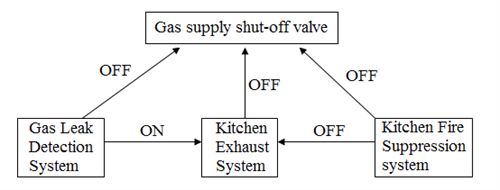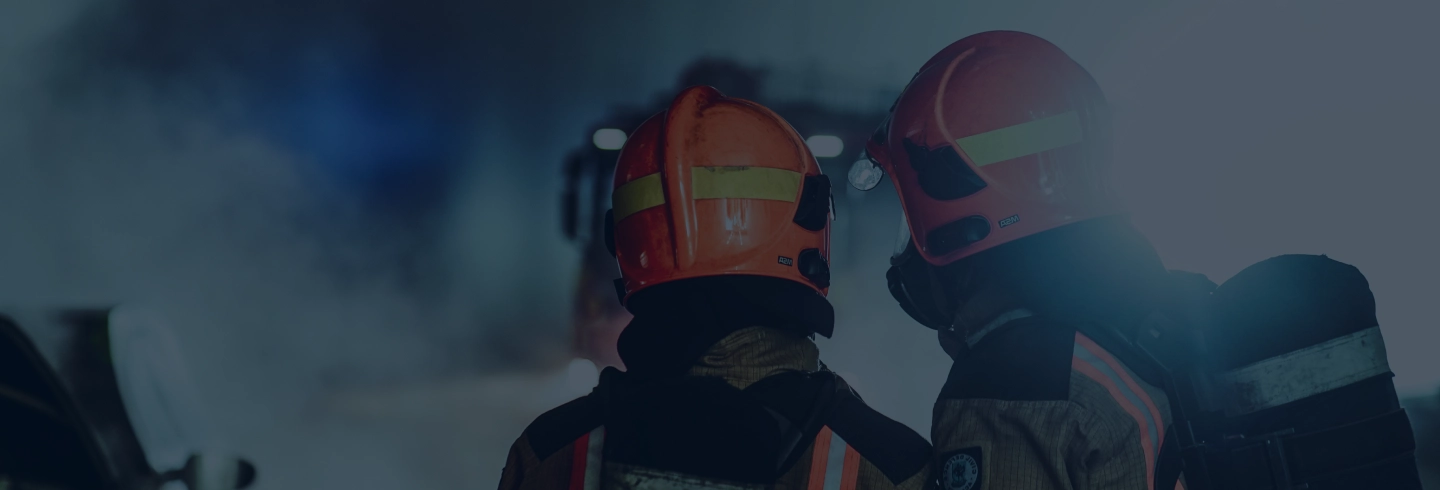Please enter a keyword to search
A1.0 STANDARDS
The following standards for LPG cylinders and ancillary fittings shall be complied with:
| TABLE 1 : STANDARDS FOR LPG CYLINDERS & FITTINGS | ||
| S/N | ITEM | STANDARDS |
| 1 | Cylinder | SS 99 |
| 2 | Cylinder Fittings | SS 233 |
| a) Flexible Hose | ||
| b) Regulator | SS 281, BS 3016, UL144 | |
| c) Cylinder valve | SS 294 | |
| 3 | Gas Leak Detector | BS EN 60079-29-1 and BS EN 600179-14 |
A2.0 SPECIFICATIONS
A2.1 LPG Cylinder Fittings
a. Flexible hoses
(1) Hoses or flexible connectors used to supply LPG to utilization equipment or appliances shall be installed in accordance with the relevant clauses of NFPA 54 and NFPA 58. The hose shall be securely connected to the appliance. The use of rubber slip ends without hose clips shall not be permitted for domestic cylinders.
(2) Hoses shall be tested and passed the performance criteria in accordance with SS 233.
b. Regulators
Regulators shall comply with the standards as specified in the table above.
c. Over pressure protection device
(1) An over pressure protection device is a device to protect the downstream installation and shut off the gas flow if the outlet pressure exceeds the set limit.
(2) In general, a regulator with over pressure protection device shall be designed to achieve the following:
(a) ensuring reliable and continuous supply of LPG;
(b) protecting downstream system against over pressure; and
(c) protecting against failure of any regulating device.
(3) Setting of over pressure protection device shall not be more than 30% of maximum operating pressure.
d. Valves
(1) Cylinder valves
Cylinder valves shall comply with the standards as specified in the table above.
(2) Safety valves
(a) Hydrostatic relief valves designed to relieve the hydrostatic pressure that might develop in sections of liquid piping between two isolating valves shall be installed in each section. Hydrostatic valves shall comply with UL 132, Standard for Pressure Relief Valves for LPG.
(b) Emergency shut-off valve shall be provided after the knockout pot. The emergency shut-off valve shall be linked to a release mechanism so that the valve can be closed from a safe distance of at least 3m from the LPG cylinders. The emergency shut-off valve may incorporate fusible element which melts at not more than 250° when exposed to fire, allowing the emergency shut- off valve to close by itself.
(c) An accessible gas shutoff valve shall be provided at the upstream of each gas pressure regulator. Where two gas pressure regulators are installed in series in a single gas line, a manual valve shall not be required at the second regulator.
(d) Main gas shut-off valves controlling several gas piping systems shall be prominent and readily accessible for operation and properly installed so as to protect it from physical damage. They shall be marked with a metal tag or other permanent means attached by the installing agency so that the gas piping systems supplied through them can be readily identified.
(e) An exterior shut-off valve to permit turning off the gas supply to each building in an emergency shall be provided and plainly marked.
e. Piping
(1) Pipe design and specifications shall be in accordance with the relevant clauses in NFPA 54 and NFPA 58. No polyethylene material is allowed to be used for the piping system except for necessary industrial applications.
(2) Pipe material shall be tested and certified according to recognised ASTM or British Standard. The pipe supplier shall produce Mill certificates.
(3) The manifold and main LPG supply pipeline shall be welded together as far as practicable. Welders for the piping work must be qualified and certified by a recognised body.
(4) Pipelines pressure test shall be witnessed and certified by a Professional Engineer (Mechanical).
(5) The liquid LPG pipelines shall be painted in “Blue” and the vapour LPG pipelines in “Yellow” with the marking of the word “LP-Gas” at intervals of not more than 3m.
(6) When connecting additional gas utilisation equipment to a gas piping system, the existing piping shall be checked to determine if it has adequate capacity. If inadequate, the existing system shall be enlarged as required, or separate gas equipment of adequate capacity shall be provided.
f. Pigtail
(1) Pigtail shall include a 6mm flexible hose or tube, a 6mm tee-check valve or excess flow valve and a 6mm ball valve.
(2) Flexible hose shall be fabricated of materials resistant to LPG reaction both in liquid and vapour state. It shall be designed for a minimum bursting pressure of 1750 psi (121 bar) and working pressure of 350 psi (24 bar). The hose shall be marked “LPG” at intervals of not more than 3m.
(3) The tee-check valve shall be Underwriters Laboratories Inc. (UL) listed or it shall comply with other recognised/ approved standard.
(4) The ball valve shall be rated to at least 600 psi (41 bar).
g. Pressure gauge
(1) Each bank of LPG cylinder manifold shall have a pressure gauge.
(2) For high-pressure section, the gauge shall have a range of 0 to 300 psi (0 to 20.1 bar)
(3) For low-pressure section, the gauge shall have a range of 0 to 50 psi (0 to 3.45 bar)
h. Vaporiser
(1) Vaporisers, where applicable, shall be constructed in accordance with the applicable provision of NFPA 58, ASME Code or other recognised pressure vessel Codes and Standards for a design pressure of 250 psi (17.24 bar) and shall be permanently and legibly marked with:
(a) markings required by the Code;
(b) the allowable working pressure and temperature for which it is designed; and
(c) the name or symbol of the manufacturer.
(2) Vaporisers shall be provided with a suitable automatic means to prevent the passage of liquid through the vaporiser to the vapour discharge piping. This feature shall be permitted to be integrated with the vaporiser or otherwise provided in the external piping.
(3) Vaporisers shall have a manual shut-off valve and an automated valve (e.g., thermostatic, magnetic or float) which closes in the event of power failure or overload.
(4) Vaporisers shall have relevant temperature control and the necessary safety features.
(5) Vaporisers shall have a pressure relief valve set at 250 psi (17.24 bar) with the release point directed upward.
i. Knock-out pot
The knockout pot shall have at least two drain valves. The drain shall end at ground level and plugged at the end.
j. Gas meters
(1) Installation and application of gas meters shall be in accordance with the relevant clauses in NFPA 54 and shall be able to take a pressure of 20 psi (1 psi = 6.895 kPa).
(2) Gas meters shall be selected for the maximum expected pressure and permissible pressure drop.
(3) Vapour meters of the tin or brass case type of soldered construction shall not be used at pressure in excess of 1 psi (7 kPa).
(4) Vapour meters of the die cast or iron case type shall be permitted to be used at any pressure equal to or less than the working pressure for which they are designed and marked.
(5) Gas meters shall be located in ventilated spaces readily accessible for examination, reading, replacement or necessary maintenance.
(6) Gas meters shall not be placed where they will be subjected to damage, such as adjacent to a driveway, under a fire escape, in public passages, halls or where they will be subjected to excessive corrosion or vibration.
(7) Gas meters shall be located at least 1m from sources of ignition.
(8) Gas meters shall not be located where they will be subjected to extreme temperatures or sudden extreme changes in temperature. Meters shall not be located in areas where they are subjected to temperatures beyond those recommended by the manufacturer.
(9) Gas meters shall be supported or connected to rigid piping so as not to exert a strain on the meters.
(10) Gas meters shall be protected against over pressure, back pressure, and vacuum, where such conditions are anticipated.
k. Strainers
Strainers shall be designed to minimise the possibility of particulate materials clogging lines and damaging meters or regulators. The strainer element shall be accessible for cleaning.
A2.2 Electrical bonding and grounding
a. Electrical circuits shall not utilise gas piping or components as conductors.
b. All electrical connections between wiring and electrically operated control devices in a piping system shall conform to the requirements of SS 254.
c. Any essential safety control (in the vaporiser) depending on electrical current as the operating medium shall be of a type that will shut off (fail safe) the flow of gas in the event of current failure.
A2.3 Gas leak detection
a. Gas leak detectors shall be connected to a localised alert alarm, emergency shut- off valve as well as the kitchen exhaust systems. The gas supply safety shut-off valve system shall also be interlocking with the kitchen automatic fire suppression system. See diagram below.

b. LPG pipe installation shall not be permitted in the following areas:
(1) in the ground under concrete flooring within building;
(2) under building under building foundations;
(3) within lift shafts and cavity walls;
(4) in compartments or ducts dedicated for electrical switchgears, transformers or air-conditioning ducts;
(5) in refrigeration chambers, coldrooms, air handling rooms and ventilation or other hazardous materials;
(6) adjacent to pipes and vessels containing flammable, oxidizing, corrosive and other hazardous materials; and
(7) in fire lift lobby, FCC, smoke-free lobbies, fire pump rooms, firefighting water tank rooms, sprinkler control valve rooms, riser ducts, areas of refuge, protected corridors, exit staircases, bedrooms and other occupied area, etc.
c. Proper metal pipe sleeve shall be installed for the gas pipes running in enclosed non-ventilated areas or basement floor, and at least one end exposed directly to the exterior open safe space (it can be used to facilitate the gas leak detection system).
d. Gas pipe running vertically shall be enclosed within a protected riser shaft and be fully fire separated from other M&E risers. Ventilation opening shall be provided for such gas riser
Updated 3 Sep 2025

